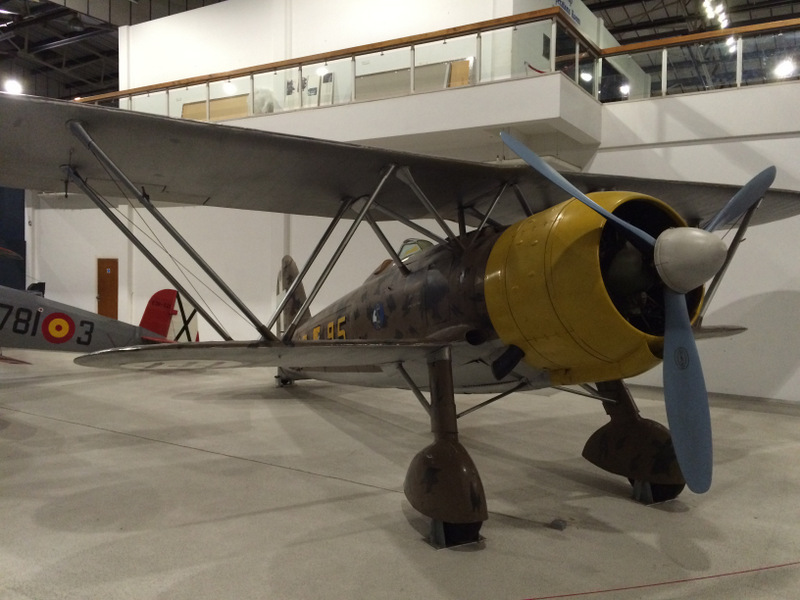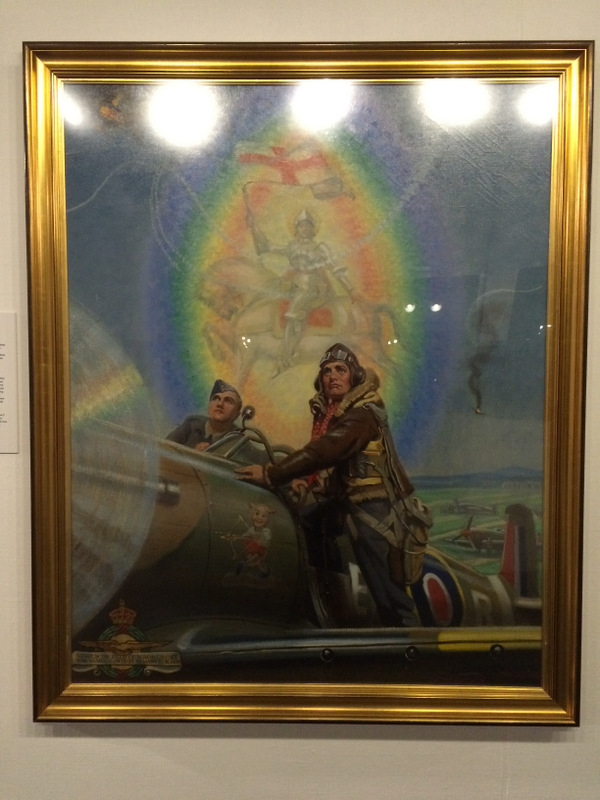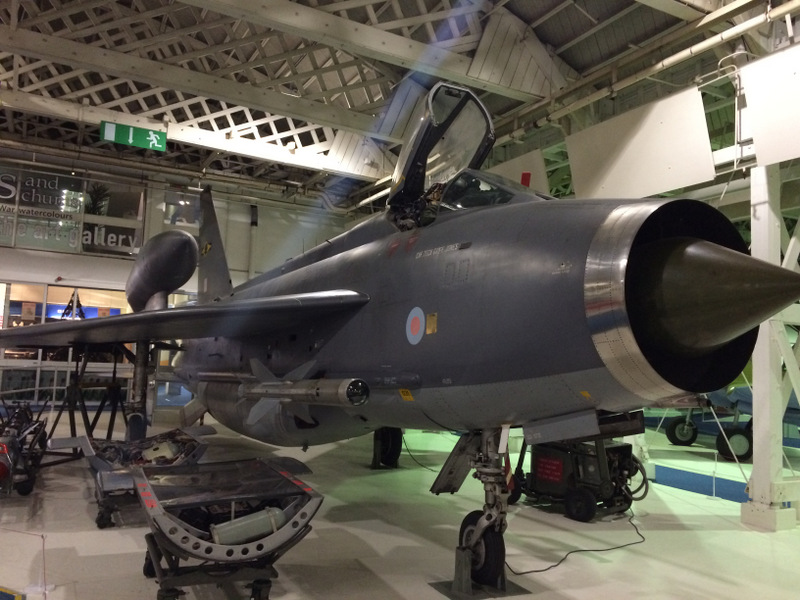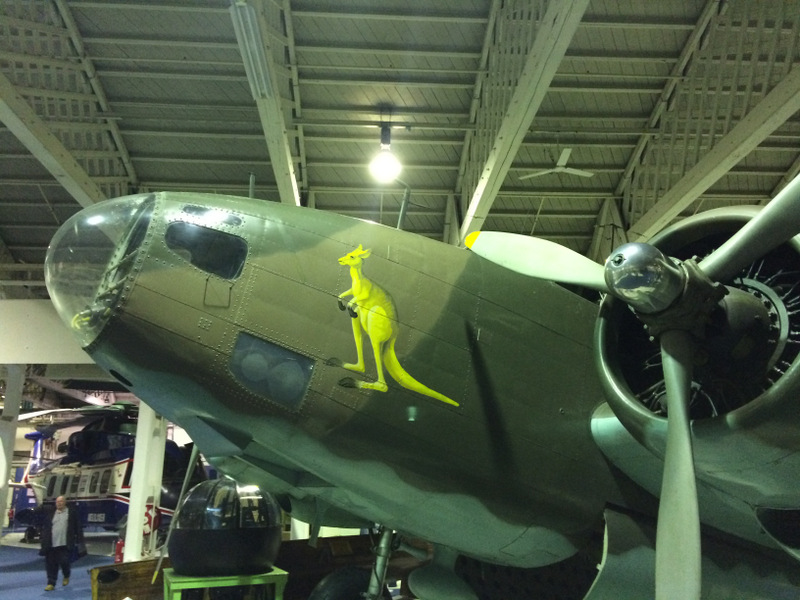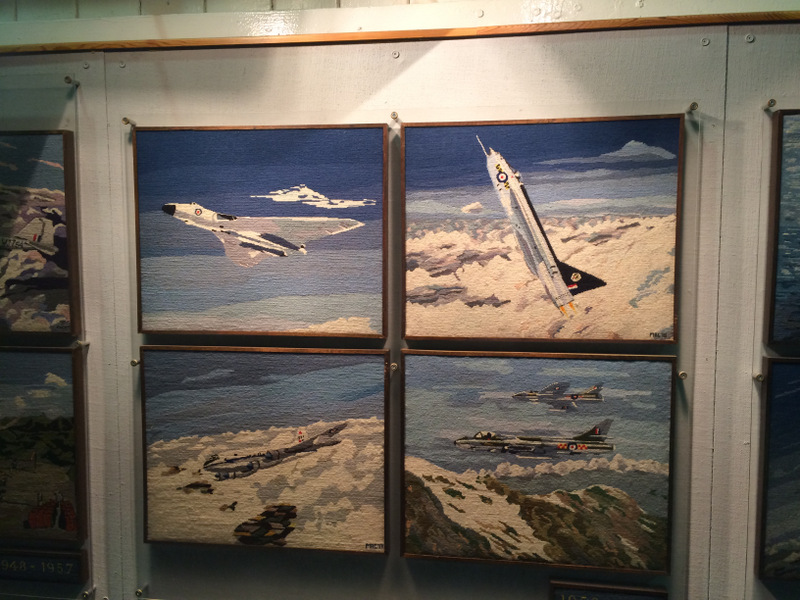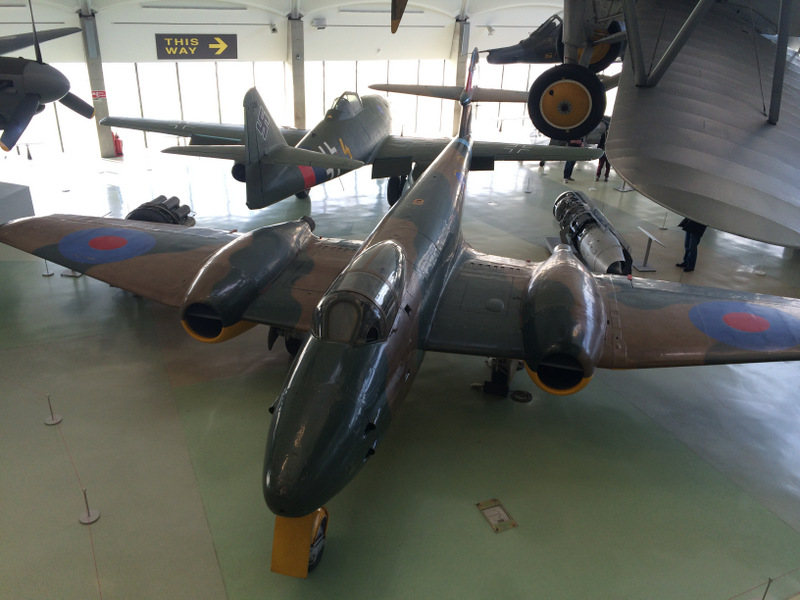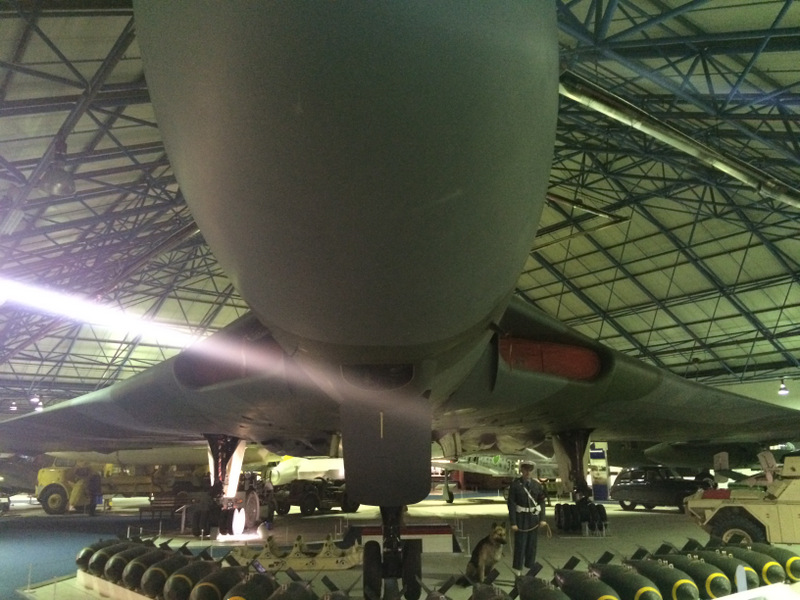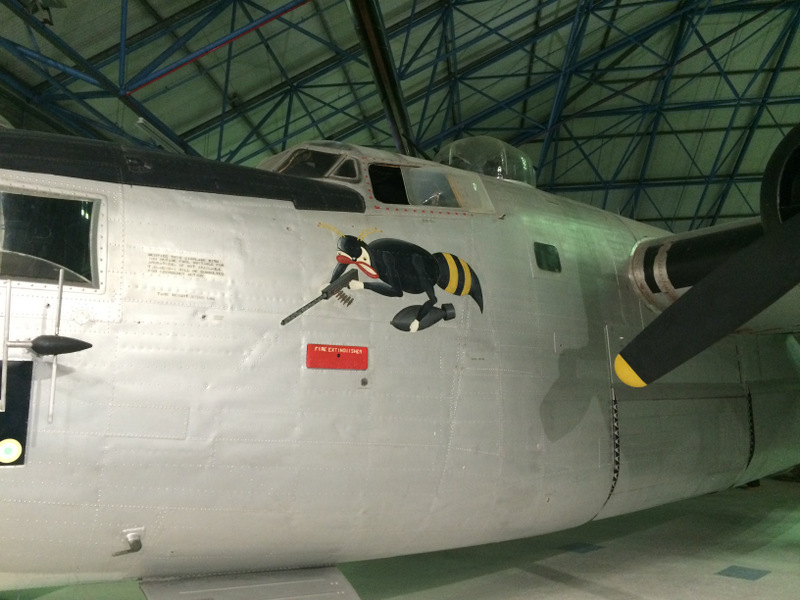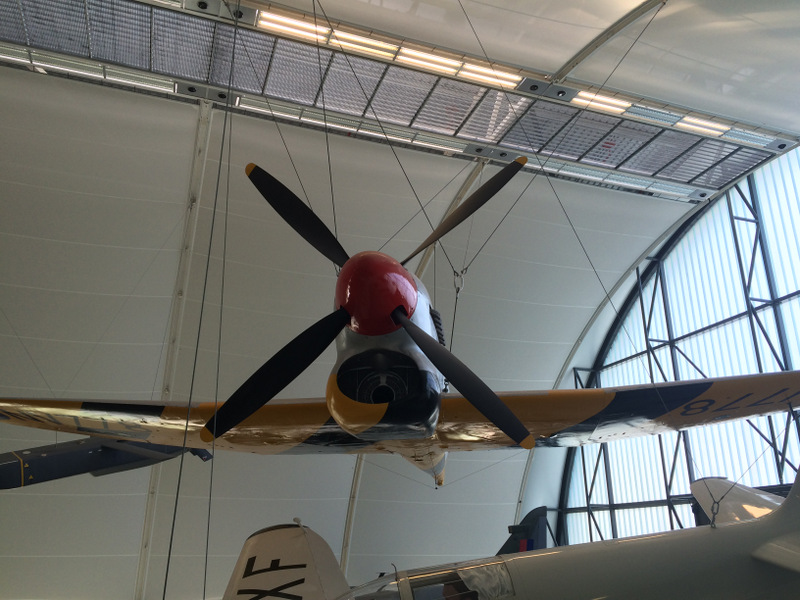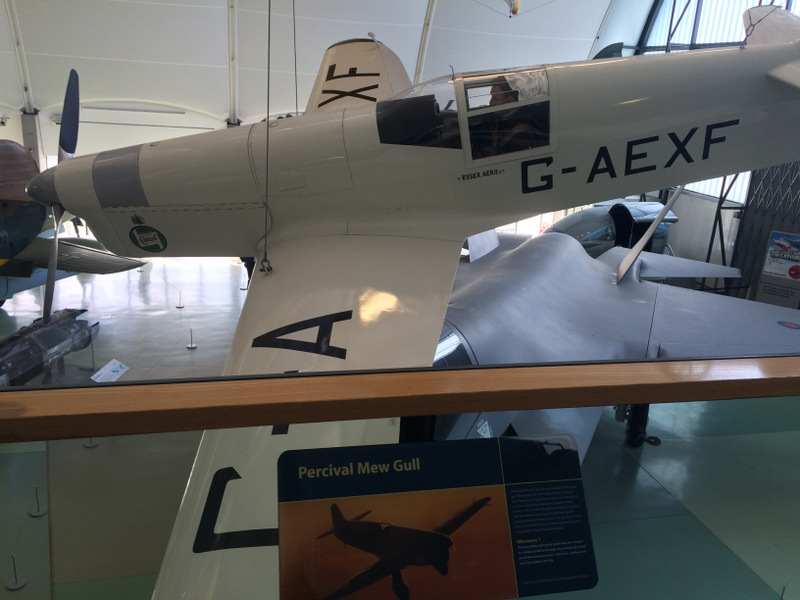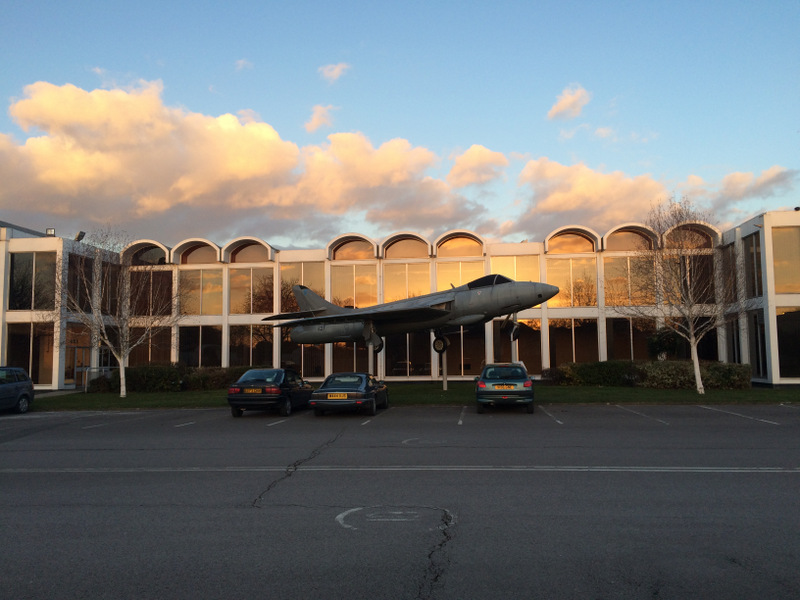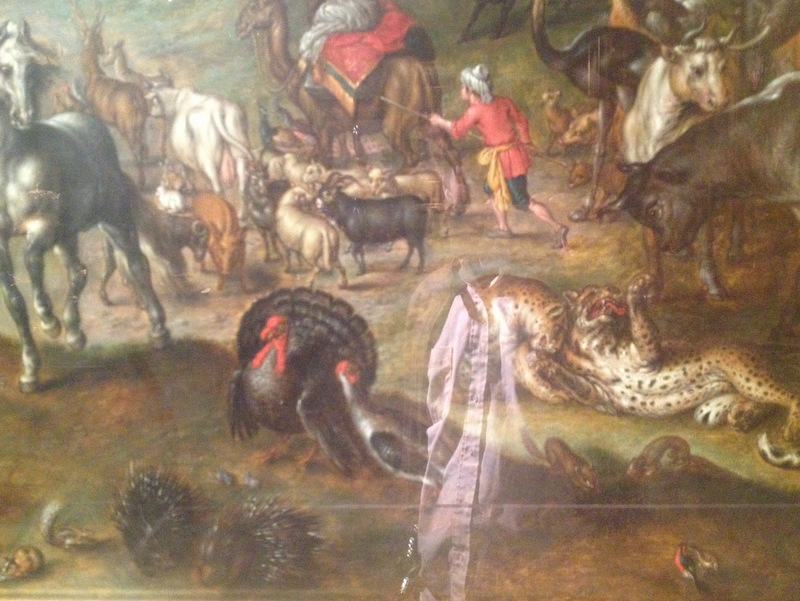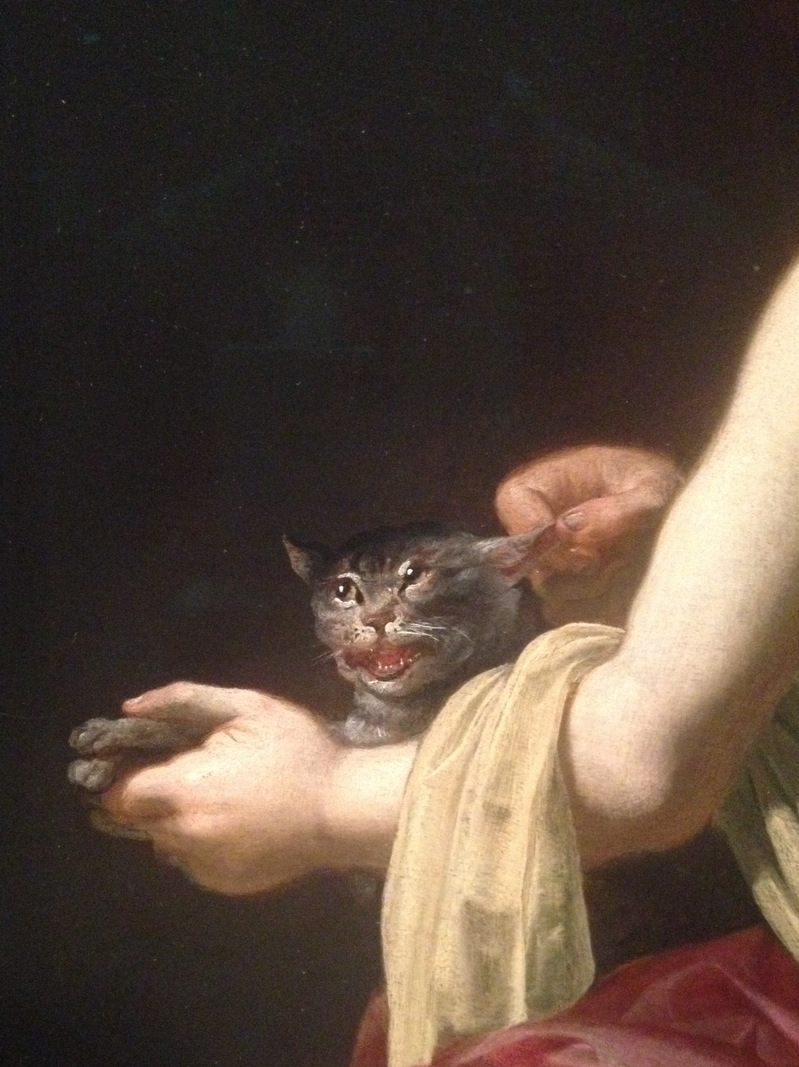I was in England last month, and had a chance to make it out to the RAF Museum, which is in a sort of bleakly redeveloped northern suburb of London. I took the bus partway over from Crouch End (which was a pretty nice bus ride) and then walked from a bus stop on the A406 (this was a pretty long and interesting walk), and eventually arrived at the complex.
In scale and presentation, the RAF museum has a lot more in common with Udvar-Hazy than with the main Air and Space museum in Washington. There are some thematic groupings and some interpretive panels (in some instances, the panels seem to have been donated directly from trade show displays, so, for example, there is one for a cluster bomb that basically says “this cluster bomb rules and you should buy it!” which I thought was pretty funny), but in general it’s just rooms with a huge collection of really interesting airplanes. The exception to this is a very nicely-done World War I exhibit which is up in a building that used to be the Royal Aircraft Factory.
A category of person will arrive at a museum like this and want to photograph everything. I basically fall into that category, and here are some of the pictures I took.

The Supermarine Stanraer, despite being a pretty handsome aircraft (if you ask me), was apparently fairly reviled by the people who had to fly it.

I built a plastic model Gloster Gladiator when I was little, and had read a lot about it, but this is the first time I ever saw one in person.

The dog jacket on display was custom-made for a squadron dog, then used to dress a teddy bear until it got into the RAF museum collection.

Later model Meteor (seriously look at how much more together it is now that they have captured Me-262s to crib from).
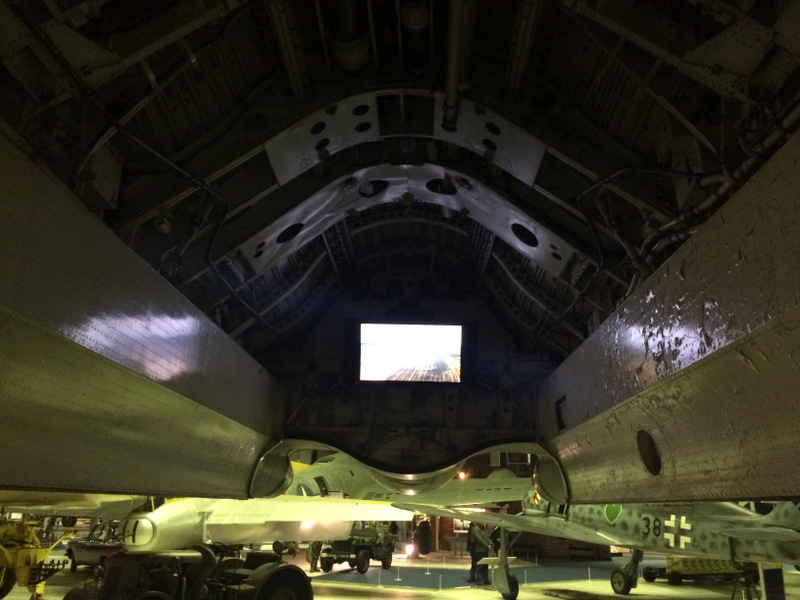
Avro Vulcan bomb bay, with a screen showing Avro Vulcans taking off in rapid succession in a practice scramble.
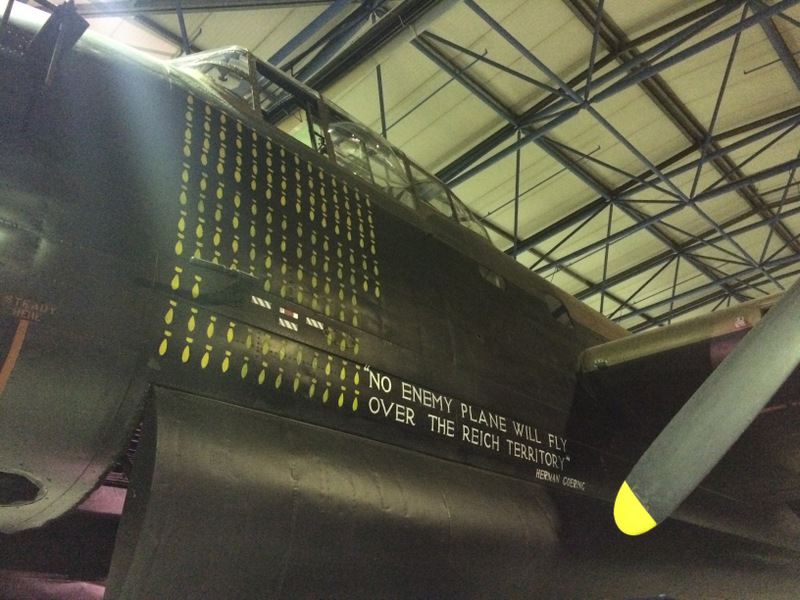
The classic claim chowder on the side of this Lancaster should not distract from the fact that so-called “strategic bombing” was both counterproductive and a crime against humanity.
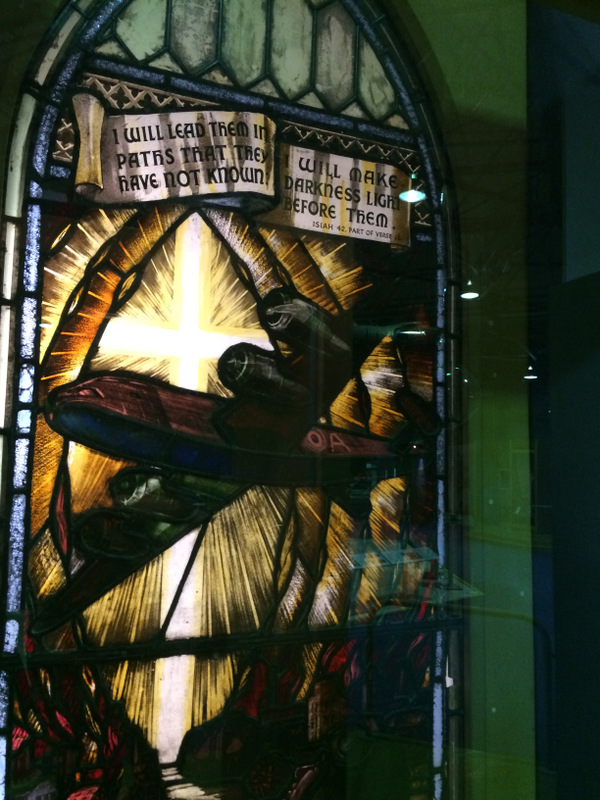
A stained glass window honoring the RAF pathfinders, which had formerly been in an actual church. Sort of an atrocity!
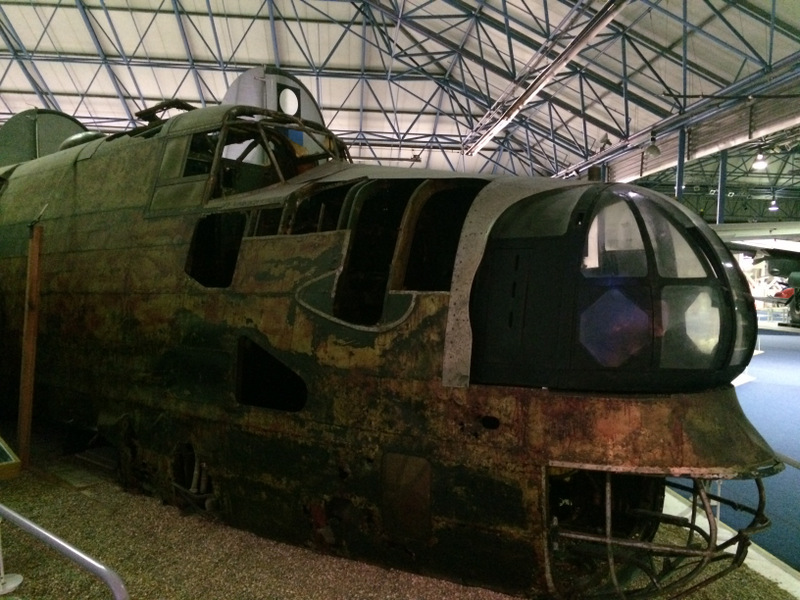
This Handley Page Halifax crash-landed and sank in a lake after helping sink the Tirpitz, but was recovered in the 70s.
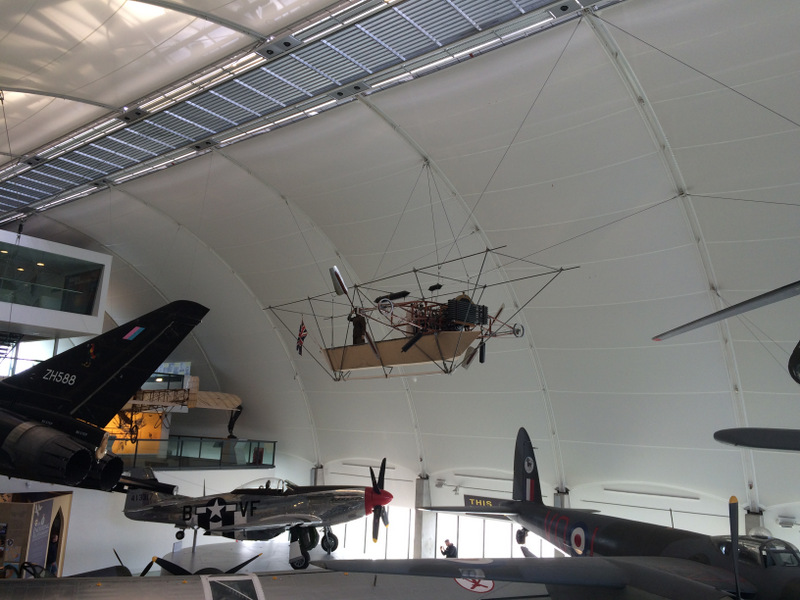
In view: the tail of a Eurofighter, a P-51, part of a Mosquito, but in particular the gondola of the first British military airship, the Nulli Secundus.



